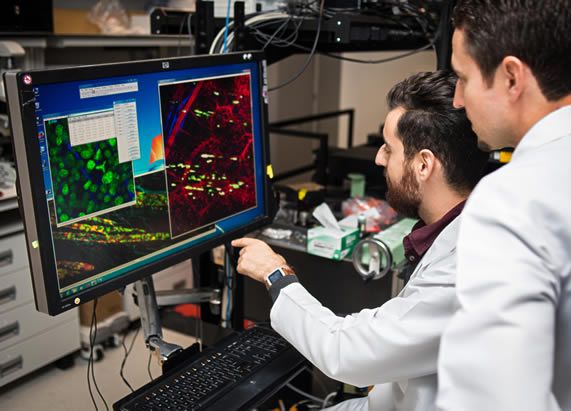PhD Public Seminar: MITCHELL SLAPIK
When & Where
April 15
3:00 PM - 4:00 PM
UTHealth Houston, McGovern Medical School, MSB 2.103 (View in Google Map)
Contact
- Joy Lademora
- 713-500-9872
- [email protected]
Event Description
Vision: More than Meets the Eye
Mitchell Slapik (Advisor: Michael Beierlein, PhD; Off-Site Advisor: Valentin Dragoi PhD)
In this dissertation, I argue that neuroscience and artificial intelligence can collaborate to advance our understanding of the brain. Faced with the shared problem of coping with our world, these two fields have developed parallel strategies in a kind of convergent evolution. To illustrate this, I have presented three papers that bridge the gap between neuroscience and artificial intelligence. The first paper examines why the visual system uses edge detectors in its first stage of processing. The second paper explores an inverse relationship between brain and retina complexity using convolutional neural networks. Finally, the third paper shows how the brain enhances transmission of sensory information during physical activity. Together, these papers show how collaboration between neuroscience and artificial intelligence can generate new insights. In the years to come, I expect neuroscience and artificial intelligence to collaborate more closely and deepen our understanding of the brain.
Advisory Committee:
- Michael Beierlein, PhD, Chair
- Valentin Dragoi, (Off-Site Advisor)
- Fabrizio Gabbiani, PhD
- Harel Shouval, PhD
- Edgar Walters, PhD
Vision: More than Meets the Eye
Mitchell Slapik (Advisor: Michael Beierlein, PhD; Off-Site Advisor: Valentin Dragoi PhD)
In this dissertation, I argue that neuroscience and artificial intelligence can collaborate to advance our understanding of the brain. Faced with the shared problem of coping with our world, these two fields have developed parallel strategies in a kind of convergent evolution. To illustrate this, I have presented three papers that bridge the gap between neuroscience and artificial intelligence. The first paper examines why the visual system uses edge detectors in its first stage of processing. The second paper explores an inverse relationship between brain and retina complexity using convolutional neural networks. Finally, the third paper shows how the brain enhances transmission of sensory information during physical activity. Together, these papers show how collaboration between neuroscience and artificial intelligence can generate new insights. In the years to come, I expect neuroscience and artificial intelligence to collaborate more closely and deepen our understanding of the brain.
Advisory Committee:
- Michael Beierlein, PhD, Chair
- Valentin Dragoi, (Off-Site Advisor)
- Fabrizio Gabbiani, PhD
- Harel Shouval, PhD
- Edgar Walters, PhD







